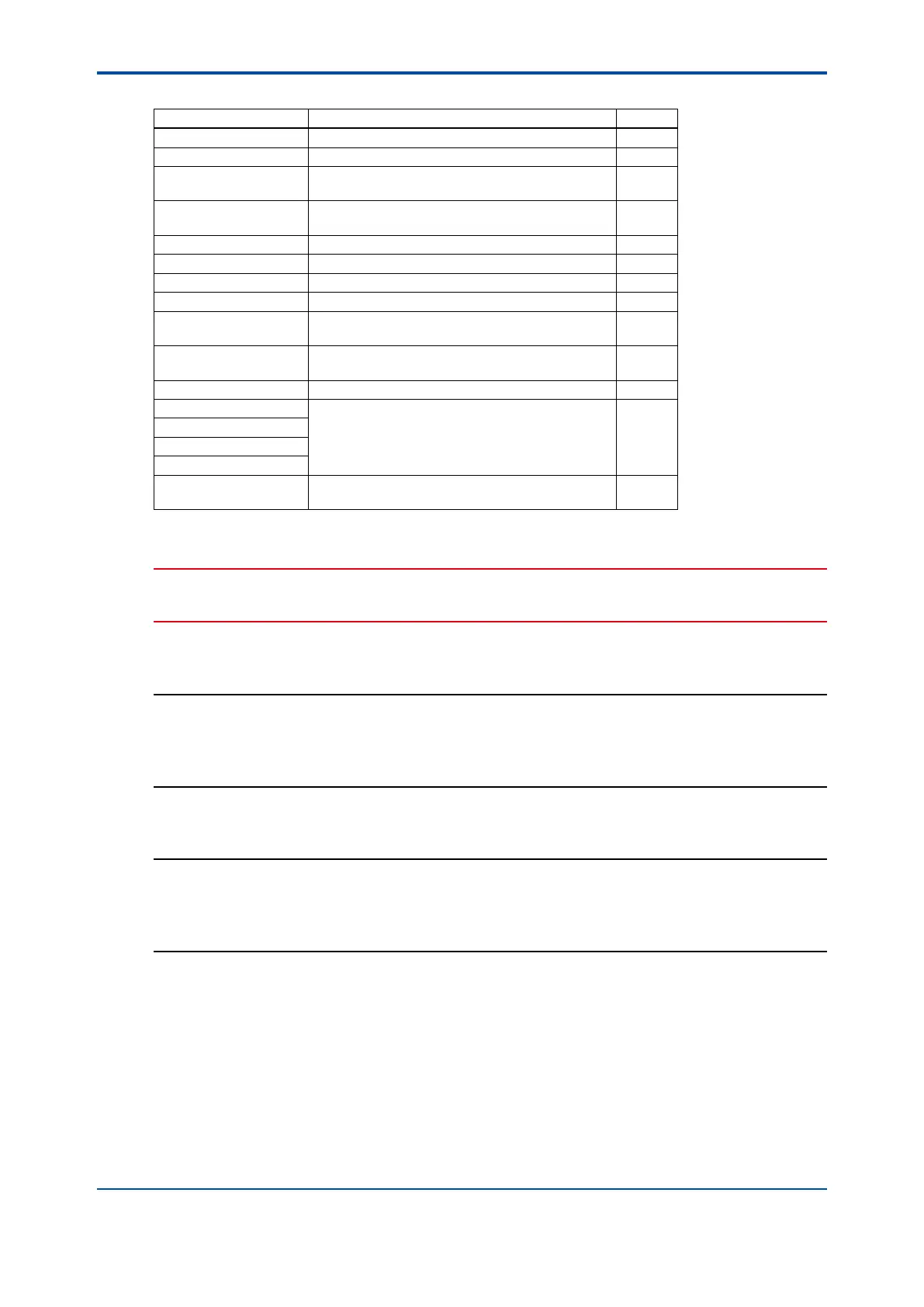<16. COMMISSIONING OF SENCOM pH/ORP>
16-12
IM 12A01A02-01E 8th Edition : Oct. 01, 2015-00
Table 16.3 Error conguration
Display item Description Default
pH too high The pH value exceeds 16.00. Warn.
pH too low The pH value is lower than –2.00. Warn.
Temperature too high Measured process temperature is higher than the
maximum limit.
Warn.
Temperature too low Measured process temperature is lower than the
minimum limit.
Warn.
ORP too high The ORP value is higher than 1500 mV. Off
ORP too low The ORP value is lower than –1500 mV. Off
rH too high The rH value is higher than 100. Off
rH too low The rH value is lower than 0. Off
Matrix cong. error The temperature compensation matrix is not set
properly (see Section 16.2.3).
Fault
Calib. time exceeded Calibration time exceeds the calibration interval
(see Section 16.2.4).
Off
Wash half-time error The response to wash is abnormal. Off
Impedance 1 too high The sensor must be checked. Off
Impedance 1 too low
Impedance 2 too high
Impedance 2 too low
SENCOM changed The SENCOM sensor has been changed.
This error setting can be set to either Off or Warn..
Warn.
CAUTION
If canceling an error conguration could be risky, do not cancel it as a dangerous situation may
result.
NOTE
The “Impedance 1 too high/too low” and “Impedance 2 too high/too low” error items are displayed
in the Error conguration screen. In general, for a pH sensor, “Impedance 1” means “glass
electrode,” and for an ORP sensor, it means “metal electrode.” “Impedance 2” represents the
reference electrode in all cases.
NOTE
Before using sensors which do not have any temperature measuring elements, set both of
“Temperature too high” and “Temperature too low” to Off on the “Error setting” screen. Due to the
open input of temperature signal, a false error may happen as if temperature goes over a high
limit or a low limit.
16.5 Logbook conguration
In “Logbook conguration,” the user congures information to be saved to a logbook or initializes
the logbooks.
Logbooks are used to keep an electronic record of events such as error messages, calibrations,
and programmed data changes. By referring to this log, users can, for instance, easily determine
maintenance or replacement schedules.

